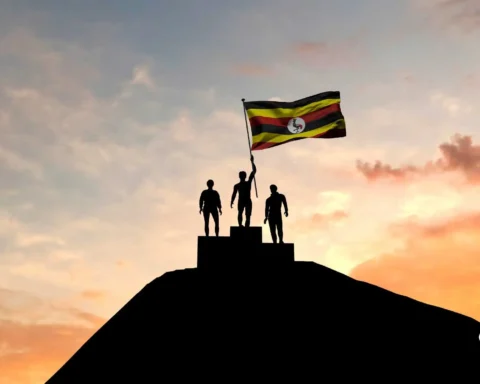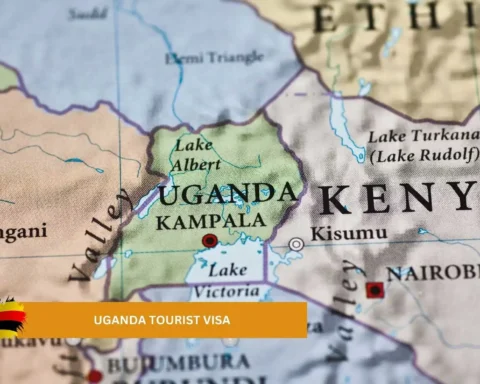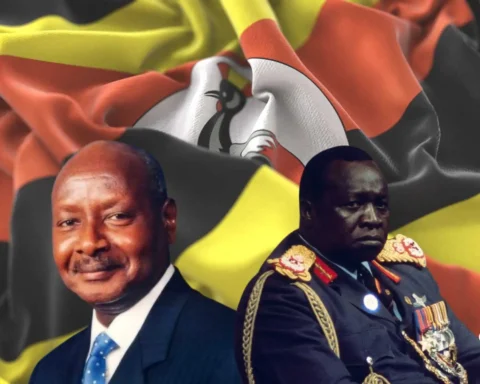Are you curious about Uganda’s culture? Uganda, often called the “Pearl of Africa,” is a landlocked country in East Africa. Known for its stunning natural beauty, diverse wildlife, and rich cultural tapestry, Uganda has a unique blend of history, traditions, and contemporary developments. Uganda is in East Africa, bordered by South Sudan to the north, Kenya to the east, Tanzania to the south, Rwanda to the southwest, and the Democratic Republic of the Congo to the west. It is landlocked but boasts a diverse landscape that includes lush rainforests, expansive savannas, high mountains, and the vast Lake Victoria, the largest tropical lake in the world.
Table of Contents
History and Heritage
The significance of Uganda’s heritage is multi-faceted, encompassing cultural identity, historical continuity, economic benefits, international recognition, environmental stewardship, social cohesion, and the preservation of intangible heritage. Understanding and preserving Uganda’s rich cultural and historical legacy is essential for the country and the global community as it contributes to the diversity and richness of human heritage worldwide.
There were archaeological discoveries in Uganda. Early excavations were performed that have unearthed evidence of prehistoric human activity in Uganda. Fossils and Artifacts explore significant fossils and artefacts discovered, such as stone tools and pottery shards. Dating Methods explain the techniques used to date prehistoric sites and materials found in Uganda.
In Uganda, two official languages are commonly spoken: English and Swahili. But English is more famous. On the other hand, Swahili is considered a national language in the East African area. Luganda is also a common language in the northeastern part of the country.
Ugandan People and Ethnic Groups
Uganda is a culturally diverse nation in East Africa, known for its rich tapestry of ethnic groups and the warm hospitality of its people. The Ugandan population comprises numerous ethnicities, with the largest groups being the Baganda, Banyankole, Basoga, Bakiga, and Acholi. Each of these ethnic communities contributes to the country’s vibrant cultural mosaic, showcasing a wide array of languages, traditions, and customs. Despite this diversity, Ugandans share a strong sense of national unity, and the country’s motto, “For God and My Country,” reflects their commitment to both religious and patriotic values. Ugandans are known for their friendliness and willingness to welcome visitors, making it a place to experience the beauty of Africa’s diversity firsthand.
Religion and Beliefs
Religion and beliefs hold a significant place in Ugandan society, reflecting the country’s diverse cultural heritage. Uganda is predominantly a religious nation, with a majority of its population adhering to Christianity, both Catholicism and various Protestant denominations, while a smaller but significant minority practices Islam. Traditional African religions also persist, particularly among some ethnic groups, where ancestral spirits and nature worship play a crucial role in daily life. The religious landscape in Uganda is characterized by a remarkable degree of religious tolerance, with people from different faiths often coexisting peacefully. Spirituality and religious gatherings are central to Ugandan life, providing a sense of community, moral guidance, and a source of solace in challenging times. This religious diversity and enthusiasm contribute to the cultural richness and depth of beliefs throughout the nation.
Traditional Clothing and Attire
Uganda boasts a wide range of traditional clothing and attire, reflecting the country’s diverse ethnic groups and cultures. Here are some examples of traditional clothing from different regions and ethnicities in Uganda:
- Gomesi (Busuuti): The Gomesi, also known as the Busuuti, is a traditional dress worn by women in Uganda, particularly among the Baganda ethnic group. It is a floor-length, brightly coloured dress with a square neckline and sash that wraps around the waist. The Gomesi is often made from colourful, patterned fabrics and is accessorised with beaded necklaces and bracelets.
- Kanzu: The Kanzu is a traditional long robe worn by Ugandan men, especially among the Baganda and Bakiga ethnic groups. It is typically white and is often accompanied by a matching round cap called a “Kiganda.” The Kanzu is commonly worn on special occasions and symbolises respect and formality.
- Budadiri: The Budadiri is a traditional garment worn by the Bakonzo people in the Rwenzori Mountains region of Uganda. It consists of a wraparound skirt for women and a cloth tied around the waist for men. The fabric is usually made from brightly coloured materials, reflecting the Bakonzo people’s cultural identity.
- Kikoy and Kitenge: Kikoy and Kitenge fabrics are widely used in Uganda for both casual and formal attire. Kitenge is a colourful African wax print fabric that can be fashioned into dresses, skirts, shirts, and suits. Kikoy, on the other hand, is a versatile piece of cloth often worn as a wraparound skirt, shawl, or headscarf by both men and women.
- Imvutano (Rwanda Influence): In some parts of Uganda, especially in the southwestern regions near Rwanda, you may find people wearing traditional Rwandan attire called “Imvutano.” This includes colourful wraparound skirts, blouses, and headwraps. The influence of Rwandan culture is particularly evident in these areas.
- Animal Skins (Karamojong): In the northeastern region of Uganda, among the Karamojong people, traditional clothing may include animal skins and hides. The Karamojong are known for their distinctive style, which includes leather skirts, headdresses, and accessories crafted from animal materials.
It’s important to note that modern Western-style clothing is also prevalent in Uganda, especially in urban areas. However, traditional clothing continues to be worn proudly during cultural ceremonies, weddings, and other important events.
Food and Cuisine
Ugandan cuisine is diverse and reflects the country’s rich cultural heritage and agricultural abundance. The cuisine is influenced by various ethnic groups and regions, resulting in a wide range of flavours and ingredients. Here are some key components of Ugandan food and popular dishes:
- Matoke: Matoke is green cooking bananas that are peeled, boiled, and mashed to create a staple Ugandan dish. They are often cooked with onions, tomatoes, and spices to make a flavorful stew known as “matooke stew.”
- Posho and Beans: Posho is a staple food made from maize (corn) flour and water, cooked to a porridge-like consistency. It is commonly served with beans, groundnut sauce, or vegetables. Posho and beans is a budget-friendly and filling meal.
- Luwombo: Luwombo is a traditional Ugandan stew made with meat (often chicken, goat, or beef), vegetables, and groundnut (peanut) sauce. The dish is slow-cooked in banana leaves or a unique pot called a “luwombo” to infuse the flavours.
- Rolex: A “Rolex” is not a watch in Uganda but a popular street food snack. It consists of a chapati (flatbread) rolled around, a filling of fried eggs, vegetables, and sometimes meat or sausage.
- Nyama Choma: Nyama Choma is a beloved East African dish featuring grilled or roasted meat, often goat or beef. It’s seasoned with various spices and served with vegetables and spicy sauces. It’s a common choice in social gatherings.
- Sukuma Wiki: Sukuma Wiki, meaning “to push the week” in Swahili, is a side dish made from collard greens sautéed with onions, tomatoes, and spices. It’s a nutritious and economical accompaniment to many Ugandan meals.
- Fish: Uganda’s numerous lakes and rivers provide an abundance of fish, and tilapia is a commonly consumed variety. It is often grilled, fried, or stewed and served with various sauces.
- Groundnut Sauce: Groundnut (peanut) sauce is a common condiment in Ugandan cuisine. It is used to accompany dishes like posho, matoke, and luwombo. The sauce is made by blending groundnuts with water and spices, creating a creamy and nutty flavour.
- Mandazi: Mandazi are deep-fried doughnuts or fritters, often enjoyed as a sweet treat with tea or coffee.
Ugandan cuisine is known for using fresh ingredients and simple cooking methods. While traditional dishes are prevalent, you can also find international cuisine in urban areas and restaurants catering to various tastes. Ugandan food is a delightful blend of flavours and cultural influences that reflects the country’s culinary diversity.
Music and Dance
Uganda boasts a vibrant and diverse music and dance scene deeply rooted in the country’s rich cultural traditions and modern influences. Music and dance play a significant role in Ugandan society, serving as a means of communication, storytelling, and celebration. Here are some notable aspects of Ugandan music and dance:
1. Traditional Music and Dance:
- Traditional Ugandan music is characterized by its use of indigenous instruments such as drums, xylophones, harps, and flutes.
- Various ethnic groups have distinct musical styles and dance forms, often accompanied by vibrant costumes and elaborate choreography.
- The Baganda, for example, are known for their royal drums, while the Bagisu people have the mesmerizing Imbalu dance associated with their circumcision rituals.
2. Drums and Percussion:
- Drumming is at the heart of Ugandan music and is used to convey rhythms, messages, and emotions.
- Drums come in various shapes and sizes, and different regions have their drumming traditions, such as the royal drums of the Baganda or the thunderous drums of the Bagisu.
3. Traditional Instruments:
- The xylophone, known as “adungu” or “akogo,” is a prominent instrument in Ugandan music, producing melodious tunes.
- The thumb piano, called “amadinda” or “kalimba,” is another common instrument used for creating intricate melodies.
- Flutes, harps, and string instruments like the “endongo” and “adungu” add depth and variety to Ugandan music.
4. Contemporary Music:
- Modern Ugandan music blends traditional elements with contemporary styles like reggae, hip-hop, dancehall, and pop.
- Notable Ugandan musicians and bands have gained international recognition, contributing to the country’s growing music industry.
5. Pop and Gospel:
Pop and gospel music enjoy widespread popularity in Uganda. Gospel music, in particular, is influential, with many artists dedicated to spreading religious messages and inspiration through their songs.
6. Dance Styles:
- Traditional Ugandan dance styles are diverse and dynamic, often incorporating intricate footwork, body movements, and colourful costumes.
- The “Kadodi” dance of the Bagisu people, the energetic “Larakaraka” dance of the Baganda, and the “Nankasa” dance of the Basoga are just a few examples of traditional Ugandan dances.
Uganda’s music and dance traditions are deeply ingrained in the country’s social fabric, serving as a means of connecting with heritage, expressing emotions, and celebrating life’s milestones. Whether witnessing a traditional ritual dance or enjoying the latest Afrobeat hit, Uganda offers a diverse and vibrant musical experience.
Family and Social Structure
Family and social structure in Uganda are deeply rooted in traditional values, kinship systems, and cultural diversity. While modernisation and urbanisation have brought about some changes, many Ugandans still maintain strong ties to their extended families and adhere to traditional social structures. Here are key aspects of family and social structure in Uganda:
- Extended Families: Ugandan society is characterised mainly by extended families, which include parents, children, grandparents, aunts, uncles, and cousins. These extended families provide a support network for individuals throughout their lives, offering emotional, financial, and social assistance.
- Kinship and Clan Systems: Ugandans often identify strongly with their clan and kinship groups, which play essential roles in social organisation. Clans are groups of people who trace their ancestry to a common ancestor and often have distinct names, totems, and responsibilities.
- Marriage and Family Life: Marriage is a significant life event in Uganda and is often a community affair. Polygamy is still practised in some parts of the country, particularly in rural areas. Bridewealth, known as “lobola” or “bride price,” is a customary practice where the groom’s family provides gifts or livestock to the bride’s family.
- Gender Roles: Traditional gender roles are prevalent in many Ugandan communities, with men typically responsible for activities like farming and women taking care of domestic tasks. However, these roles are evolving with changing societal norms, and women are increasingly active in various fields, including politics and business.
- Social Hierarchy: In some communities, social hierarchy is structured around age and seniority. Elders are respected and hold positions of authority within their clans and communities. Decisions on important matters are often made collectively, with input from community leaders and elders.
- Religious Influence: Religion, particularly Christianity and Islam, plays a significant role in Ugandan society and can influence family dynamics and social structure. Places of worship often serve as centres for community activities and social gatherings.
- Urbanisation and Nuclear Families: In urban areas, the influence of extended families may be somewhat diminished, with nuclear families becoming more common due to the demands of modern life. However, even in cities, many Ugandans maintain strong connections with their extended families in rural areas.
- Education and Migration: Education and employment opportunities sometimes lead young people to migrate from rural homes to urban centres or abroad. This can result in family structure and dynamics changes as individuals seek economic opportunities.
Challenges and Adaptations
Uganda faces various challenges, and its society has had to adapt to address these issues. Here are some key challenges and adaptations in the country:
- Healthcare Challenges: Uganda grapples with healthcare challenges, including limited access to quality healthcare in rural areas, high rates of infectious diseases such as HIV/AIDS and malaria, and a shortage of healthcare professionals. To address these challenges, the government and NGOs have been working to improve healthcare infrastructure, increase access to healthcare services, and raise awareness about preventive measures.
- Education Challenges: Despite progress in education, Uganda faces challenges like a high dropout rate, inadequate infrastructure, and a shortage of qualified teachers. To adapt, efforts are being made to expand access to education, improve teacher training, and promote vocational and technical education to enhance employability.
- Poverty and Unemployment: High levels of poverty and unemployment, especially among the youth, are significant challenges. Adaptations include promoting entrepreneurship and small-scale businesses, job training programs, and the development of agricultural and agribusiness opportunities.
- Gender Inequality: Gender-based discrimination and violence remain significant issues in Uganda. Adaptations include women’s empowerment programs, legal reforms, and awareness campaigns to promote gender equality and protect women’s rights.
- Political and Governance Challenges: Uganda has experienced political instability and governance issues, including allegations of human rights abuses and corruption. Civil society organizations and activists have been advocating for democratic reforms and greater transparency in government.
- Environmental Challenges: Environmental challenges such as deforestation, soil erosion, and climate change impact agriculture and livelihoods. Adaptations involve reforestation efforts, sustainable farming practices, and climate resilience initiatives. There are also national parks that need to be reserved.
- Infrastructure Development: The country invests in infrastructure development, including road networks and energy projects, to boost economic growth and connectivity between urban and rural areas.
Future of Uganda’s Culture
The future of Uganda’s culture is likely to be influenced by a combination of traditional values, globalisation, modernisation, and the aspirations of its youthful population. While it is challenging to predict with certainty, here are some potential trends and scenarios that may shape the future of Uganda’s culture:
- Preservation of Traditional Values: Despite modernisation and globalisation, Uganda will likely continue valuing its traditional cultural heritage. Elements such as extended families, kinship systems, and traditional ceremonies may persist as vital components of Ugandan culture.
- Cultural Fusion: As Uganda remains an ethnically diverse nation, there is potential for a blending of various cultural elements. This fusion may create unique and hybrid cultural expressions, particularly in urban areas where people from different ethnic backgrounds interact more frequently.
- Globalisation Influence: Globalisation will likely continue to impact Ugandan culture, primarily through media, technology, and the Internet. Younger generations may adopt elements of global pop culture while integrating them with their traditions.
- Youth Engagement: Uganda has a notably young population, and the aspirations and interests of the youth will play a significant role in shaping the country’s cultural future. Youth-led movements, artistic expressions, and activism may lead to changes in social norms and values.
- Cultural Revival: Efforts to preserve and revive traditional music, dance, art, and crafts may become more prominent as cultural institutions and individuals work to ensure these elements continue to thrive.
- Fashion and Art: Ugandan fashion designers, artists, and artisans are gaining local and international recognition. The future may see Ugandan creativity and innovation flourishing in these fields.
Conclusion
Uganda’s culture is a dynamic and resilient tapestry, deeply rooted in tradition while embracing the forces of change. As the nation progresses into the future, it is poised to celebrate its rich cultural diversity, adapt to evolving global influences, and harness the energy and creativity of its youth. Preserving traditional values, the fusion of different cultural elements, and the continuation of cherished customs will ensure that Uganda’s cultural heritage remains vibrant and meaningful. With a commitment to inclusivity, intergenerational dialogue, and promoting its artistic and culinary treasures, Uganda is poised to shape a cultural landscape rooted in its past and open to the possibilities of tomorrow.
FAQs
What is the capital city of Uganda?
The capital city of Uganda is Kampala.
What are the major languages spoken in Uganda?
English is the official language of Uganda, and Swahili is also widely spoken. However, numerous indigenous languages are spoken throughout the country, including Luganda, Runyankole, and Luo, among others.
What are the major religions in Uganda?
Most Ugandans are Christians, with Catholicism and various Protestant denominations prominent. A significant minority also practises Islam, and there are smaller communities of traditional African religions.
What is Uganda’s climate like?
Uganda has a diverse climate due to its varying altitudes and geographical features. Generally, it has a tropical climate with distinct wet and dry seasons. The southern part of the country tends to be more temperate, while the north is










[…] easily accessible to other languages and they started learning it. It made an interchanging of culture very prominent and the concept of fusion in clothes and food began to gain prominence. Insidious […]